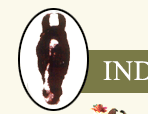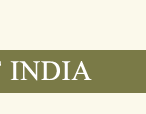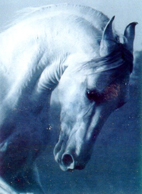


IHSI REPORT – INDIA
So much has happened since the founding of the IHSI in 1999, and lest I be reminded, its formal registration in 2001 with the Indian Government. Sadly, not long after the launch of Dale Durfee and Francesca Kelly’s book in the year 2000, we lost the irrepressible and magnanimous support of one of our most colourful founder members, Late Raja Bhupat Singh, who understood only too well the long-term necessity of channeling the collective goals of our nation’s societies, breeders and champions of the Marwari and other Indigenous horses of India under one benevolent parent organization. The IHSI ably met the logistical criteria both in India and abroad as per the reciprocal regulations that allowed us to export the first 6 Indigenous horses in the year 2000 to the US and 13 horses to Sri Lanka in 2003. It should be noted that several of the horses purchased for export to Sri Lanka and processed without prejudice by the IHSI, were from the Late Rao Jodh Singh of the Marwari Horse Society; at that time the healthy ambitions natural to all states had not escalated to the destructive level of rivalry it has in recent years through the short- sighted actions of certain individuals. No one should be in any doubt that the longed for opportunity for breeders and traders of the Indigenous Horses to capitalize on their hard work and investment were brought to an abrupt standstill these last 6 years due to interference at the highest level with the correct and proper protocol of the IHSI, at that time and still today, the only legitimate government registered organization with a proven track record in the business of international Indigenous Horse movement; nor should anyone be in any doubt that the abrupt imposition of a total ban overnight in 2003, after 4 years of tireless pressure to open up export of Indigenous Horses and barely 3 consecutive years of successful activity, is NOT because the Marwari or Kathiawari our two breeds of most interest to national and foreign buyers and breeders are in threat of extinction, or because there is any justifiable concern re the slaughter and consumption of our horses abroad, or because the Government of India has any urgent concerns re the nationwide census of Indigenous Horses they have yet to complete. And for the record, despite its name, the horse now known as the Marwari has been in evidence for several centuries under various names throughout India and cannot possibly be deemed to “belong “ to the people of Marwar. Putting aside recent temporary restrictions due to outbreaks of EI interstate, and the lack of any acceptable quarantine zone acceptable to the requirements of EU import regulations and other similarly regulated international ports of destination, the need for a variable and costly quarantine in a transiting country is mandatory if the increasing demand for Indian horses to Europe and elsewhere is to be met, However this half-way solution is not applicable to the USA, Malaysia and a handful of others and as proven in the year 2000, 6 horses exited Indira Gandhi airport and landed in JFK New York a day later. One stallion in France, one stallion and 2 mares in Spain, now in the happy possession of Mr Mario Calcagno, another breeder of Marwaris in Rajasthan, with suspended export applications and member of the Marwari Horse Society. Knowledge of horses or horse business is not particularly evident, if indeed necessary, in the Animal Husbandry Dept.; those respected officials rely on India’s equine professionals to issue the guidelines, create a straightforward protocol they understand and one they can process bureaucratically with the maximum efficiency and minimum confusion. Every society or individual should be able to follow a straight forward criteria for export of their horses for competition, show or sale that is not dependent on a swing vote from the Government or coercion from one society on another through political lobbying. NO-ONE should be in any doubt that the current embargo is the Governments frustrated method of handling the increasing divide between the established and fully functioning IHSI and the recently converted All India Marwari Horse Society. Thus, exports have been held up for years with no benefit to anyone at all, and bought despair to the collective hopes of hundreds of horse- traders, trainers and even the simple farmer who was willing to invest his precious savings in a young foal in the hopes of making a needful profit at the countries livestock fairs. It is time for these societies to work together between themselves to resolve these issues away from the Government, and perhaps a nation-wide vote of confidence should come from the people who are not only the most disaffected by the ban, foreign buyers who continue to support their horses in India rather than in their home countries but increasing numbers of indigenous professionals and breeders from all levels of our society whose livelihood, self-esteem and aspirations would truly benefit from a free and legitimate horse trade. It is not the battle for the survival of the Marwari that is the issue or indeed an issue. The Marwari, is a huge part of our culture today through tourism, festivals, shows and the accelerated patronage of hundreds of determined horse-lovers and breeders throughout India. One only has to go into the internet for proof that international demand for India’s horses will easily be met by the proliferation of our breeders, who while advertising their horses for sale world-wide, haven’t the slightest clue as to how or when they might actually go into business. The National Research Center on Equines (NRCE) the only Government Organisation researching surveillance and disease control, artificial insemination and embryo transfer has been given significant quantities of semen from the best stallions of Marwari Bloodlines Dundlod, from which numerous foals have resulted in 2007 and 2008 which are then sold. The Government in point of fact is doing good business from free receipt and use of semen from the very horses Ms Francesca Kelly has been trying to export for the last 9 years. The current temporary license sanctioned by the Minister of Agriculture, Government of India represents a flawed solution that imposes a security of Rupees One Lakh per horse on exporting owners to ensure their return within one year. This levy does not apply to other breeds. Why would any foreign buyer invest in the purchase of the horse, the transportation of that animal to its country of destination to then also pay to return the horse back to India? This is unethical business. As for those Indian nationals wishing to represent India in the global sports stakes and equine fairs, how can any of us in India even afford to ship our horses in and out of the country for competition or show purposes, honouring the commitments made to organizers, buyers and those people desirous of working alongside us to showcase our breeds? India is a democracy that has survived innumerable elections since partition. The subject matter of our horses, their future welfare, our livelihoods and those of generations to come necessitates a formula that works for all, determined by all and agreed by all. To overcome the above issues it is the intention of the IHSI to solicit nation wide support and signatures so as to petition the Government of India to review their existing policies. I would like to thank all the IHSI members and it’s foreign chapters for their support. RAGHUVENDRA SINGH DUNDLOD |

